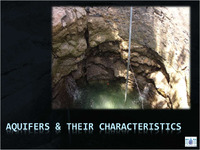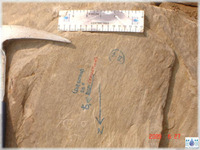Items
Tag
groundwater flow
-
 Aquifers and their characteristics Aquifers are underground layers of rock that store and transmit groundwater, characterized by their porosity and hydraulic conductivity. They can be classified as unconfined or confined, affecting their water storage and flow capabilities. Key factors include storativity, which indicates how much water an aquifer can yield over time, and transmissivity, which measures how easily water flows through the aquifer. High transmissivity allows wells to draw water rapidly, while storativity impacts the duration water is available. Understanding these properties is essential for managing groundwater resources effectively and ensuring sustainable water supply through wells and springs.
Aquifers and their characteristics Aquifers are underground layers of rock that store and transmit groundwater, characterized by their porosity and hydraulic conductivity. They can be classified as unconfined or confined, affecting their water storage and flow capabilities. Key factors include storativity, which indicates how much water an aquifer can yield over time, and transmissivity, which measures how easily water flows through the aquifer. High transmissivity allows wells to draw water rapidly, while storativity impacts the duration water is available. Understanding these properties is essential for managing groundwater resources effectively and ensuring sustainable water supply through wells and springs. -
 Permeability Thermal, electrical, and hydraulic conductivity describe a material's ability to conduct heat, electricity, and groundwater, respectively. Hydraulic conductivity determines how easily water flows through rocks, with steep slopes facilitating quicker flow compared to gentle slopes. Henry Darcy's experiments in 1856 established that the flow rate of water through porous materials is proportional to the hydraulic head difference and inversely proportional to the distance between measurement points. Darcy's law quantifies groundwater flow, emphasizing the importance of hydraulic conductivity, which varies with sediment size. Ultimately, a rock's porosity and hydraulic conductivity dictate its effectiveness as an aquifer.
Permeability Thermal, electrical, and hydraulic conductivity describe a material's ability to conduct heat, electricity, and groundwater, respectively. Hydraulic conductivity determines how easily water flows through rocks, with steep slopes facilitating quicker flow compared to gentle slopes. Henry Darcy's experiments in 1856 established that the flow rate of water through porous materials is proportional to the hydraulic head difference and inversely proportional to the distance between measurement points. Darcy's law quantifies groundwater flow, emphasizing the importance of hydraulic conductivity, which varies with sediment size. Ultimately, a rock's porosity and hydraulic conductivity dictate its effectiveness as an aquifer.
